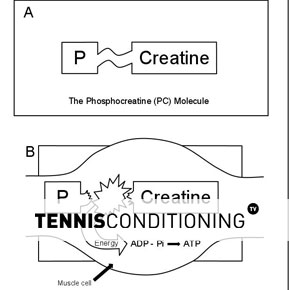Improving aerobic energy system efficiency is important because the aerobic energy system contributes ~30% of the energy needed during tennis.
The aerobic energy system can contribute to enhanced performance during a tennis match or training even though tennis is anaerobic energy system dominant.
Yet steady-state jogging is an ineffective training method in optimizing aerobic energy system contributions.
Take a closer look at the demands experienced during a tennis match, the tennis sports analysis.
Then it becomes evident that, from an energy system perspective, tennis is a sport that predominantly relies on anaerobic energy system contributions since you cannot generate a lot of force via aerobic metabolism (aerobic energy contribution).

Optimizing aerobic energy system contributions will enhance on-court performance because the aerobic energy system contributes ~30% of the energy needed during higher intensities.
Aerobic Energy System Efficiency Impacts Anaerobic Energy System Contributions
In addition, aerobic energy system efficiency positively impacts anaerobic energy system contributions due to a faster lactate & hydrogen ion clearance.
That allows the enzymes to continue to function properly, thereby allowing the anaerobic energy system to supply more energy for a longer duration of time.
This has a positive effect on force production capabilities and hence on-court tennis performance.
There are numerous ways one can enhance aerobic energy system contributions.
We recommend interval training or circuit training as more effective alternatives.
Related Exercise Physiology Articles
- Aerobic ATP Production and Energy System Efficiency
- ATP-CP Energy System
- Tennis Analysis: Avoid Wasting Time During Training
Training Zone
We provide you with some more workouts and training tips you may be interested in to optimize your training.
Also, make sure that you warm up properly before and stretch out after your training session.




